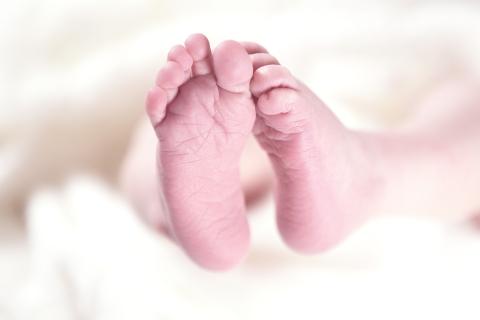Reactions to the study exploring how the microbiome is transmitted by social contact
An international team including researchers from Spain has analysed the level of exchange of microbial strains between different generations (vertical transmission) and between people who share a household or are close contacts (horizontal transmission). The analysis, published in the journal Nature, is based on about 9,700 microbiome samples from the faeces and saliva of people with different lifestyles from countries. According to the research, the transmission of bacteria is more frequent for the mouth microbiome than for the gut microbiome among people living together.

Toni Gabaldón - microbioma contacto EN
Toni Gabaldón
ICREA research professor and head of the Comparative Genomics group at the Institute for Research in Biomedicine (IRB Barcelona) and the Barcelona Supercomputing Center (BSC-CNS).
This study investigates transmission patterns of the faecal and oral microbiota in human populations. It does so using a massive amount of data from almost 10,000 samples in which microbial DNA has been analysed. By determining genetic differences to establish whether two microbial genomes are clonally related (from the same "strain"), it infers transfers between people who have some kind of contact (shared household, kinship relations, etc.). The study is highly relevant because, although it was known that microbes can be transmitted from person to person, for example through the birth canal at birth or by sharing spaces, this study provides the largest scale and highest level of resolution yet. This enables the researchers not only to establish that such transmission exists very clearly, but also to infer some patterns, such as which species are transmitted more or less, or at what ages transmission occurs most.
The data provide interesting information. For example, microbes in the mouth are transmitted more from person to person than those in the digestive system, and they are transmitted differently. In gut microbiota, there is a large vertical transmission from mother to child at birth, whereas this transmission is much lower for mouth microbes. In both cases, there is increased transmission in childhood and between people living in the same household.
The implications are many. In recent years, we have been accumulating evidence that microbial composition influences health and disease. If our social relationships can modulate the composition of our microbiota by direct transmission, then certain disease risks, determined by the microbiota, will also be modulated in the same way. However, this influence will not be as direct as the transmission of a cold, because only a modest part of the microbiota is shared and the microbiota-disease relationship is much more complex.
Methodologically, the study is rigorous, considers an unprecedented scale and resolution of data, and is well thought out. An inherent problem with this type of data is that it can only yield information on strains of microbes that are in more than one individual. This suggests that there has been transmission at some earlier point in time, but does not rule out parallel colonisation from the same source. The study can also detect microbes that have been transmitted and have survived, but we do not know the dynamics that allow some transmitted microbes to persist and others not to colonise. For example, what is the influence of shared habits between people who share a household on the degree of establishment of transmissions? This study opens the way for many future studies that will surely investigate these and other questions.
Carmen Muñoz - microbioma contactos EN
Carmen Muñoz Almagro
Head of the Infectious Diseases and Microbiome research group and director of the Microbiology Laboratory at the Hospital Sant Joan de Déu in Barcelona.
This is a very interesting study with a rigorous methodology analysing the transfer between individuals of microorganisms that make up the human microbiome. Eighteen institutions and research centres from around the world have contributed to the largest and most diverse study to date on the transmission of the human microbiome. Valles-Colomer et al. confirm that the greatest exchange of strains occurs between the gut microbiome of mothers and their babies during the first year of life, and that some of these strains may remain in their offspring for long periods of time.
In a novel way, they also observed horizontal transmission of micro-organisms between adults in close contact (people sharing a flat, partners or friends), with this transmission being very marked for micro-organisms that live in the oral microbiota, which would be transmitted by saliva.
Many studies suggest that non-communicable diseases such as diabetes, cancer or Alzheimer's are related to the composition of the microbiome of individuals. The possibility that these micro-organisms could be transmitted could, in the future, change the classification of these diseases from non-communicable to communicable diseases, amenable to targeted therapy against the micro-organisms responsible for the disease. To confirm these hypotheses, further studies are needed, and health and research authorities need to make a strong commitment to explore and discover the relationship between the human microbiome and health and disease.
Rosa del Campo - microbioma contacto EN
Rosa del Campo
Researcher at the Ramón y Cajal Hospital and member of the Specialised Group for the Study of the Human Microbiota of the Spanish Society of Infectious Diseases and Clinical Microbiology (SEIMC-GEMBIOTA)
The study is very robust, because the authors have used all the resources already available in public databases and have also generated their own sequences. They have taken into account many factors such as the nationality of the people in the study, their lifestyle habits, etc. The methodology is based on bioinformatics, and solid conclusions are reached through the application of biostatistics. This work has a high scientific quality due to the large amount of data used, and this has allowed the authors to reach solid conclusions for different ethnic groups and conditions.
We already knew that most of the micro-organisms in a newborn baby come from its mother, or from a shared family environment through cohabitation. The study demonstrates this with state-of-the-art techniques and, more interestingly, looks at the transmission of micro-organisms between unrelated people.
Just like all bioinformatic (in silico) analyses, this kind of study may not fully capture reality. That is why the researchers added biostatistical controls that ensure the validity of the process. Very few papers are as robust as this one, which includes so many people and so many sequences.
Microbiology has always focused on the study of micro-organisms that cause acute infections. But with new studies of the microbiome, we have discovered that we are colonised, from birth and throughout our lives, by many more micro-organisms of which we weren’t aware with classical culture techniques. The potential of these ecosystems for our health is becoming increasingly clear, not because of the bacteria directly, but because of our continuous exposure to their metabolites. For this reason, prevalent diseases such as cancer or cardiovascular disease are increasingly being analysed from a microbiota perspective. In addition to the fact that bacteria can excrete active substances in our cells, there is also evidence that these bacteria can degrade human metabolites and disable their function. Very few studies have included the joint perspective of micro-organisms and humans in global metabolism. Since there is a transmission of microorganisms between people who live together and in the general population, perhaps we should identify microbiota associated with diseases that have never been considered transmissible, such as cancer or cardiovascular accidents like myocardial infarction.
Finally, I would like to highlight the contribution of Dr. María Carmen Collado, from IATA in Valencia, to this research. She is one of the world's leading experts on the establishment of the microbiota in newborns.
Rosa del Campo declares receiving public funding for research projects related to the topic of the article, and acting as a consultant for a company that manufactures faecal microbiota capsules (Mikrobiomik)
Mireia Valles-Colomer et al.
- Research article
- Peer reviewed
- People


